Nestled in the rugged terrain of the Aravalli Hills in Rajasthan, India, lies Kumbhalgarh, a fortress known for its grandeur and historical significance. Often referred to as the “Great Wall of India,” this majestic fort, located approximately 84 kilometers from Udaipur, was constructed in the 15th century by Rana Kumbha. With its massive walls extending 38 kilometers, Kumbhalgarh is not only an architectural marvel but also a symbol of India’s rich cultural heritage. This article delves into the fascinating history, architecture, and significance of Kumbhalgarh, a UNESCO World Heritage Site.
Etymology of Kumbhalgarh
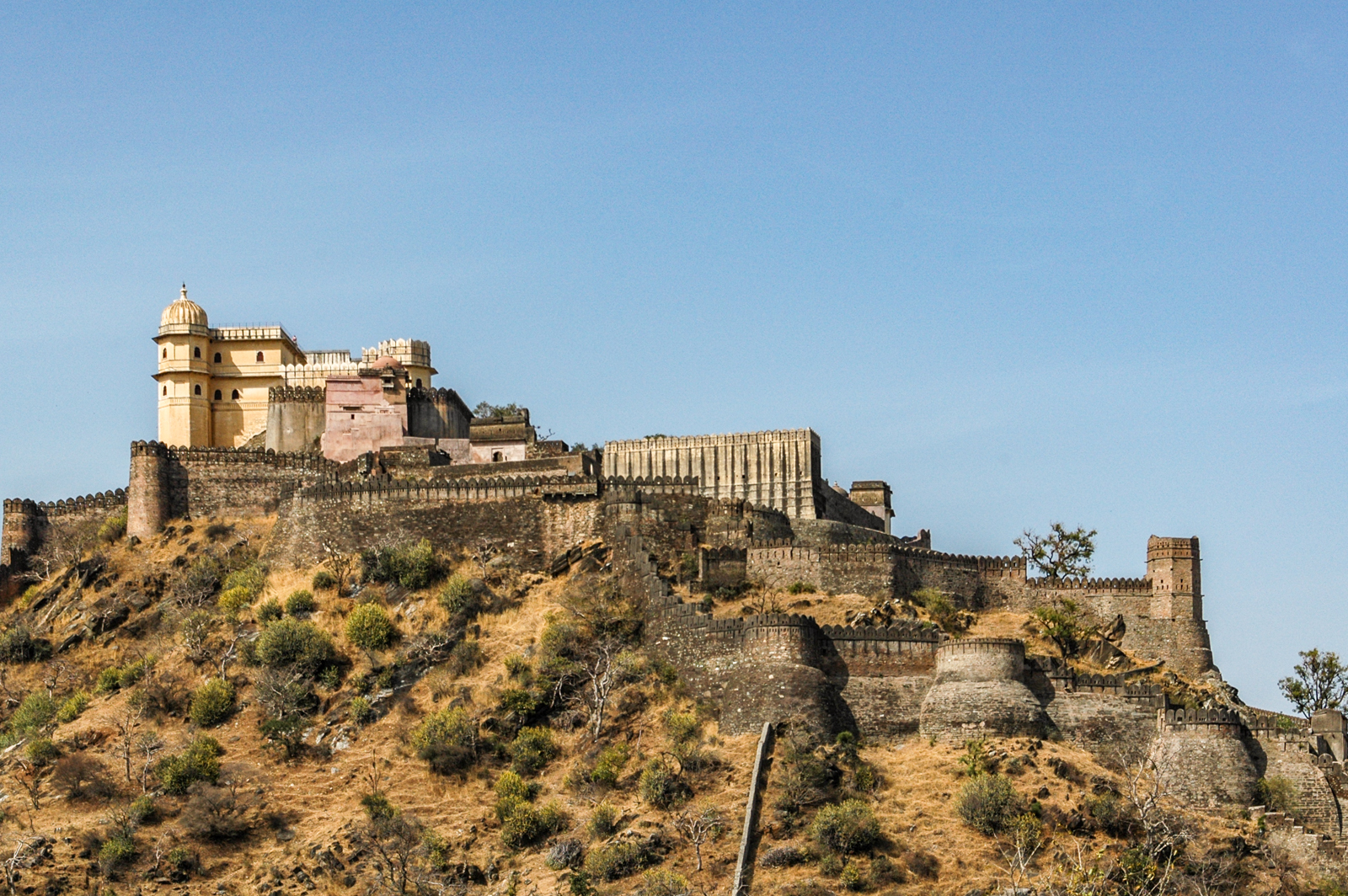
The name “Kumbhalgarh” is derived from the combination of two words: “Kumbha,” referring to the ruler Rana Kumbha who commissioned the fort’s construction, and “Garh,” meaning fort. This name pays homage to the visionary ruler who transformed a small fort into the formidable structure we see today.
Historical Background
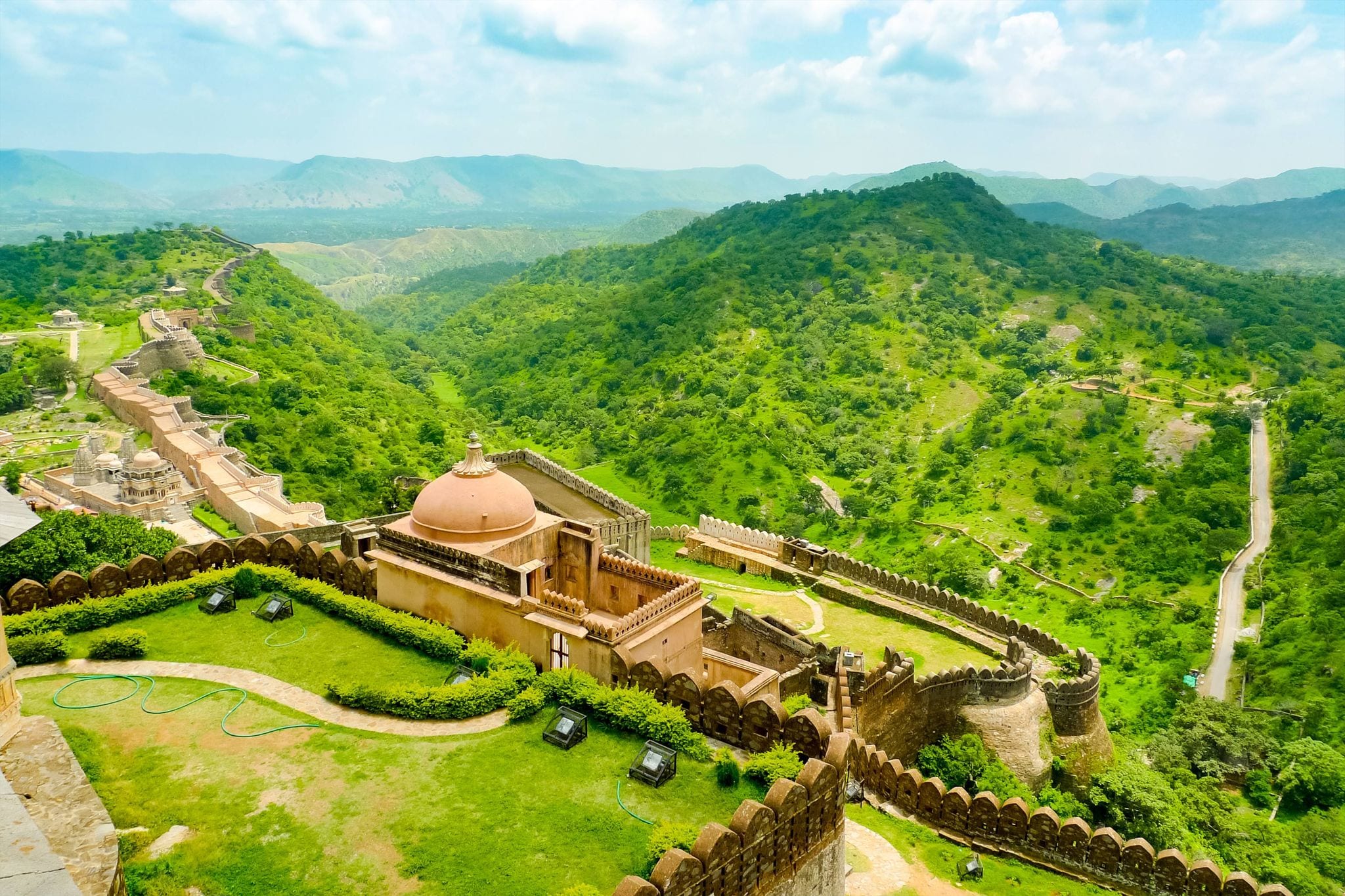
The early history of Kumbhalgarh is shrouded in mystery due to a lack of substantial evidence. Before Rana Kumbha’s reign, a smaller fort existed on the site, believed to have been built by King Samprati of the Maurya dynasty. This fort, known as Matsyendra Durg, occupied a limited hilly area. In the late 14th century, Rana Lakha of Mewar seized this region from the Chauhan Rajputs of Nadol, paving the way for Rana Kumbha to construct the grand fort of Kumbhalgarh.

Rana Kumbha, a member of the Sisodia Rajput clan, ruled Mewar and was instrumental in expanding its territory. His kingdom stretched from Ranthambore to Gwalior, encompassing vast areas of present-day Madhya Pradesh and Rajasthan. Out of the 84 forts under his dominion, Kumbhalgarh stands out as the largest and most intricate. The fort also served as a crucial defensive structure, separating the regions of Mewar and Marwar and providing a refuge for Mewar’s rulers during times of danger. Notably, the infant king of Mewar, Prince Udai, was smuggled to Kumbhalgarh in 1535 when Chittor was under siege. He later ascended to the throne, solidifying the fort’s role as a stronghold of the Mewar dynasty.
The Impregnable Fort
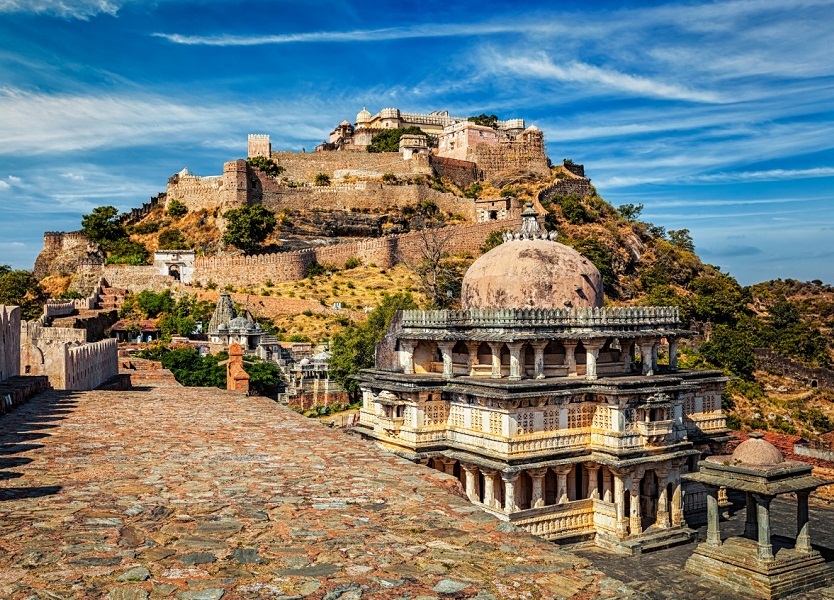
Kumbhalgarh’s formidable design rendered it nearly impregnable to direct assaults. Ahmad Shah II of Gujarat attempted to breach the fort in 1457 but failed, as did subsequent efforts by Mahmud Khalji in 1458–59 and 1467. The fort’s defense was believed to be bolstered by the Banmata deity, whose temple was later destroyed by Ahmad Shah II. Despite these attempts, Kumbhalgarh remained under Mewar’s control until it was captured by Shahbaz Khan, a general of Emperor Akbar, after a six-month siege in 1577. However, the fort was recaptured by Maharana Pratap in 1583. In 1818, an armed group of sanyasis defended the fort until it was peacefully taken over by the British, who later returned it to the Udaipur State.
Architectural Marvels of Kumbhalgarh
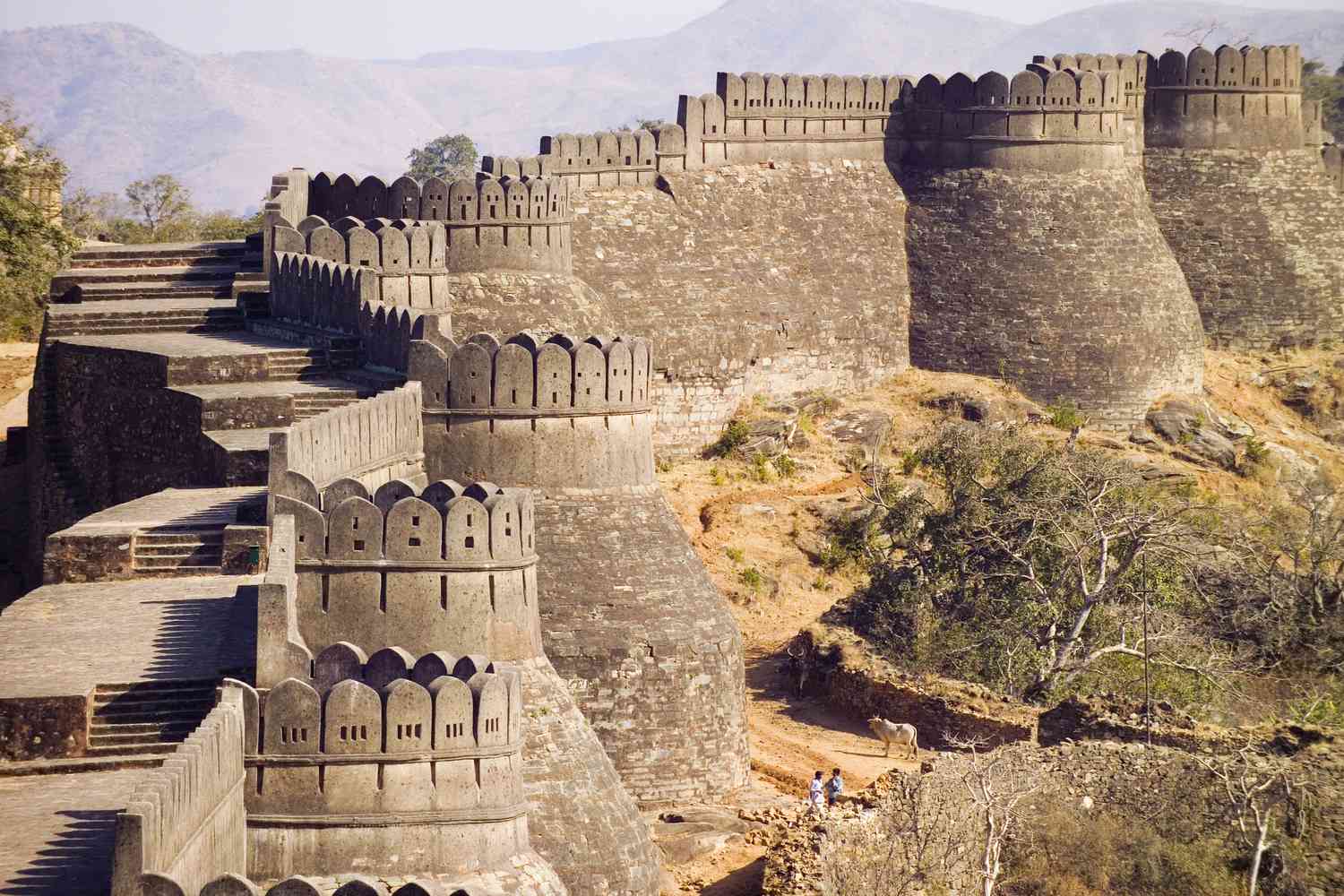
Kumbhalgarh is a masterpiece of Rajput architecture, designed by the renowned architect Mandan, who documented his architectural style in his text, Rajvallabh. Perched on a hilltop 1,100 meters above sea level, the fort’s perimeter walls stretch 36 kilometers, making it one of the longest continuous walls in the world. The frontal walls are an impressive 4.5 meters thick. Kumbhalgarh boasts seven fortified gateways and over 360 temples within its walls, including both Jain and Hindu temples. The view from the palace top offers a breathtaking panorama of the Aravalli Range.
Significant Structures Within the Fort
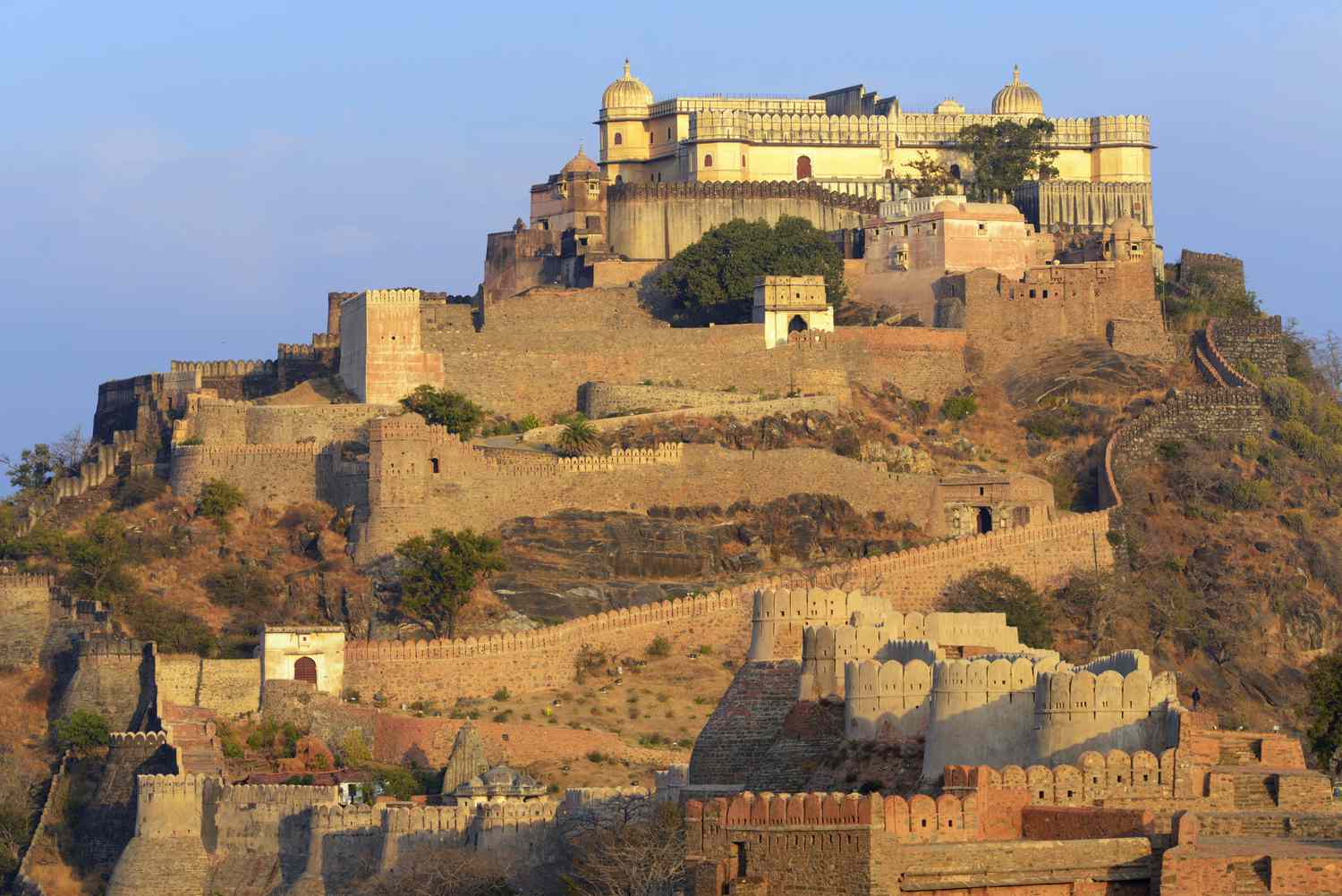
Several important structures and temples within Kumbhalgarh add to its historical and architectural significance:
- Ram Pol (Ram Gate): The main entrance of the fort, Ram Pol, is one of its most iconic features. Another entrance, Vijay Pol, is located to the east.
- Badal Mahal: Situated at the highest point of the fort, this palace offers stunning views of the surrounding landscape.
- Hanuman Pol: A double-storeyed gate with octagonal bastions, Hanuman Pol is named after a stone image of Hanuman placed in front of it by Maharana Kumbha.
- Ganesha Temple: Located near the Ram Pol, this temple, built by Maharana Kumbha, enshrines an image of Ganesha. The temple’s sanctum has a decorated curvilinear brick shikhara, while the mandapa and mukhamandapa feature a domical ceiling.
- Neel Kanth Mahadeva Temple: Built in 1458 CE, this temple is dedicated to Lord Shiva. The central shrine is adorned with a black stone idol of Shiva, depicted with 12 hands.
- Vedi Temple: A Jain temple constructed by Rana Kumbha in 1457 AD, this temple is an example of the religious diversity within the fort.
Conclusion
Kumbhalgarh Fort is a testament to the architectural genius and strategic acumen of Rana Kumbha. Its massive walls, intricate temples, and historical significance make it a vital piece of India’s heritage. As a UNESCO World Heritage Site, Kumbhalgarh continues to awe visitors with its grandeur and storied past. The fort’s legacy as the birthplace of Maharana Pratap, combined with its architectural splendor, ensures its place as one of India’s most cherished monuments.